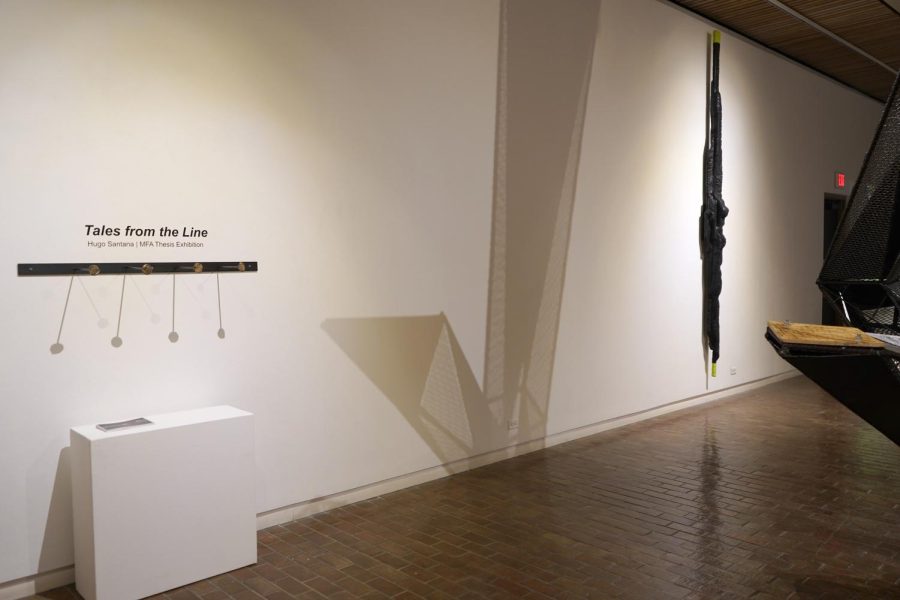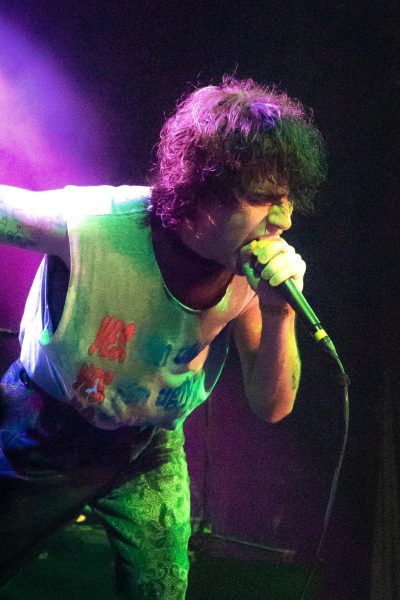‘Tales from the Line’ by Hugo Santana
MFA thesis exhibition explores movements of labor
April 19, 2022
Master of fine arts student Hugo Santana presents his thesis exhibition, “Tales from the Line” at the UTSA Main Art Gallery. The theme is the concept of labor and how its routine can be choreographic. This is Santana’s third year at UTSA, and he is graduating this spring semester with an MFA. Through his interactive sculptures, tools and videos, “Tales from the Line” is Sanatana’s perspective of the realities of capitalism in developing countries.
Santana is a graduate student from Ciudad Juárez, Mexico. He worked in an office for a studio that created sculptures, which later inspired him to design sculptures. Santana attended the Universidad Autónoma de Ciudad Juárez and graduated with a bachelor’s degree in architecture. During his undergraduate career, he studied building sculptures, but also became interested in short films and new technology. Santana applied for UTSA’s master’s program in sculpture in 2019 and will be graduating this May.
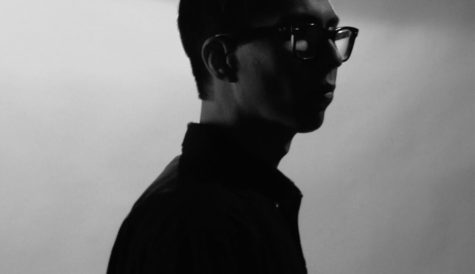
The studio art program is a three-year program where students receive an advanced education, in preparation for a career in art and obtain a high level of expertise.
In Santana’s words, the artist is on their own; they choose what kind of art they want to create and the message they want to give. He also says the Art department faculty supports students in the MFA program, so the student is not completely alone.
Santana became inspired to work with short films and new technology for his MFA. He took classes in media, sculpture and art history, along with an independent study in ceramics.
“I always wanted to do a master’s,” Santana said.
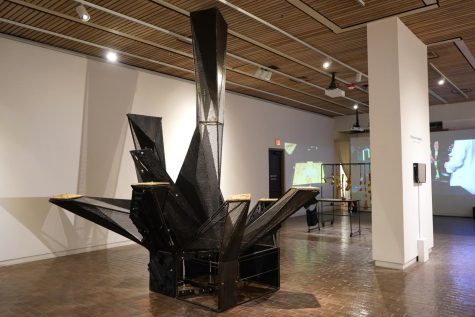

His MFA thesis exhibition, “Tales from the Line,” features sculptures and videos made to depict labor and how work has artistic characteristics. Santana’s artwork was motivated by the history of his hometown and how his parents first met. In the 70s, Ciudad Juárez, Mexico, was a changing city that grew because of new industries, like assembly plants. People migrated from all over to work in assembly plants for a better life. Santana says his parents met in an assembly plant, and because of that, he chose labor and work to be his muse.
The purpose of Santana’s videos was to be a documentary. His interest in film gave him the idea to film his videos at certain angles to create a cinematic perspective and to give his artwork a “larger than life” feeling. For example, he has a video that focuses on hands molding a ball of clay. It is just a one-shot video, and the purpose is for the audience to assume the role of the worker. The viewer can envision themselves as the worker. Another video shows what a worker does in a day. Santana wanted to create a display of how a worker’s daily routine is a natural movement, but also choreographic because it happens over and over again.
“That was another thing I was interested in,” Santana said. “The junction between dance and film and also work.”
Santana created all the sculptures and videos by himself. The biggest sculpture is made out of rebar, sheets of steel and wood. Santana took classes on how to weld here at UTSA. He also mentioned during the creation of his artwork, he had to create the videos with a greenscreen because of the pandemic.
“Art is very personal,” Santana said. “Everything has a meaning.”
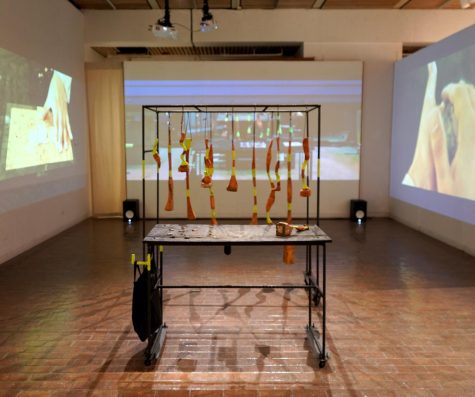

Santana explains that his artwork is his perspective; he believes that art is the raw perspective of the artist. The concept behind a piece of work is how the artist sees it. Even though artists do want viewers to create an opinion or observation of their art, it will always fall back to the intended depiction. No matter whether the artwork is minimalistic, pretty or conceptual, it will always be about the artist’s perspective.
“As artists, you are constantly questioning everything around you,” Santana said.
Before artists can even create a piece, they have to question what they are doing, why they chose the topic or why the topic is even happening. Art creates an opportunity for audiences to catch a glimpse into the world of the artist and what they see.
“I think the main reason why art is important is because it gets people to question their reality,” Santana said.
Santana’s exhibition, “Tales from the Line,” does just that and presents his message on excessive labor and capitalism’s futility.
Visit https://hugosantana.us/ for more on Santana’s artworks and projects, or visit his Instagram page @hugotrax.

